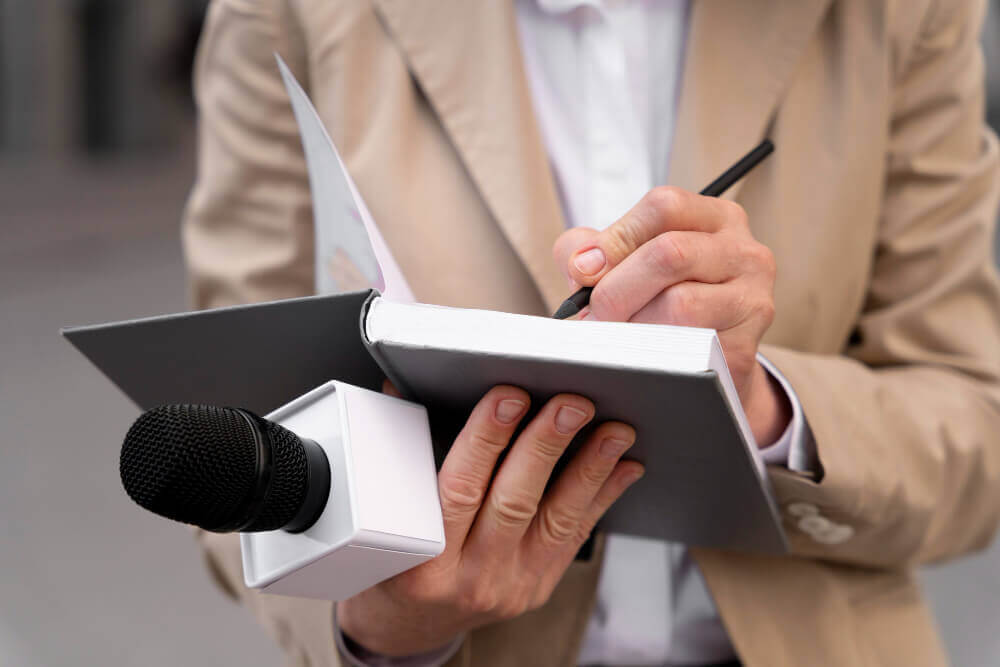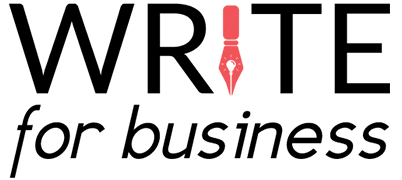Press Release Format All Editors Want You to Use [+ free template]
By Helen McCrone, SEO Copywriter and Content Writer | 975 words
Press releases generally follow a standard format, and no matter which publications you are distributing to, it pays to adopt the recommended structure when writing your news story.
Editors and their journalists are busy people, and they sift through countless press releases every day. Therefore, they won’t thank you for having to rewrite your article’s title, add a sub-headline, or simply work out if your news is something they want to cover.
Entice them to publish your news by employing the layout that they like and expect.

The Right Format for All Your Press Releases
I’ve divided the structure of a press release into nine parts. Follow the guidelines below and editors will take your news story seriously. For more writing tips, just hop over to: How to Write a Press Release: 11 Best Practices (with examples)
Logo:
There’s some debate as to whether your company’s logo and contact information should go at the top or bottom of the page. Personally, I prefer putting the logo in the header (to help with immediate identification) and the info in the footer (to avoid a cluttered look). The choice is yours.
Press release identification:
It’s super important to put the words “Press Release” at the very start. This is not an option. Editors need to understand immediately what type of copy has been submitted. If they fail to understand that your submission is a press release, they may toss out your news before they’ve even read it.
Release instructions:
Another vital element of the press release is the date on which you want your news to be published. Write either “FOR IMMEDIATE RELEASE” or “EMBARGOED UNTIL” alongside the relevant date. The latter is useful if you want editors to hold your press release until a specific date, perhaps to coincide with a certain event like a product launch.
If you’re happy for the editors themselves to decide on the release date (e.g. the day their publication is next issued), you can always write “RELEASE AT YOUR CONVENIENCE”.
Headline:
As with any copy, the headline of a press release has a powerful role to play. It not only has to encapsulate the whole story in as few words as possible but also grab the attention of your target audience.
Unfortunately, many if not most press release headings are as dull as ditch water. Do not be afraid to add a little flair when crafting your headline to spark interest. Just make sure the wording is concise and the topic (i.e. your news) is clear. Ambiguity will not persuade the audience to “read more”.
Here are a few real examples on Cision PR Newswire that I think work:
Sub-headline:
This is an option, to be honest, but I find it a useful one. It’s a chance to expand on the headline and cover a little more of the story. Quite often a publication will give you space for a sub-header. If so, take them up on the offer.
Check out these sub-headlines of some of the press releases I listed above. Note the use of the present tense:
Dateline:
If your press release is going to be published outside your region and/or time zone, you need to identify your city, followed by the state or country in capitals (e.g. Jacksonville, FL; Amsterdam, NL). This goes immediately before the first sentence of the body text, so follow it with an em-dash.
Body (with quotes):
This is where you tell your news in just a few short paragraphs. Best copywriting practice is to use the inverted pyramid structure to ensure the most important part of your news comes first. Each subsequent paragraph becomes less and less vital to the story.
Where possible, try to include a quote or two from a relevant spokesperson (e.g. a senior manager, a prestigious customer, an industry specialist). Inserting speech into the copy helps to give the press release substance and credibility. It also makes it more readable.
There is no set length for a press release, but most agree that it should ideally be between 300-600 words. Adjust the length to fit the story. Do not make it any longer than it really needs to be. You can always provide more detail elsewhere, such as on your website.
End of story notification:
Always make it clear to the editor where your story ends. There are two ways to do this:
—END—
###
Do not forget to do this. If your story happens to go onto a second page, write “MORE” at the bottom of the first page.
Contact details and notes for editors:
Once you’ve told your story, you need to give editors some background information on your company and tell them who to contact, and how, in case they have any questions or want to use some images.
The background info is known as a “boilerplate”. Basically, it’s a short “About Us” paragraph that you can copy/paste into all your press releases. Here are some tips on how to write an effective boilerplate by Wylie Communications.
So, that is the standard format the press release writers use. Follow these guidelines and you’ll make an editor very happy. In the meantime, you can download this free press release template to help you write your next news stories.

